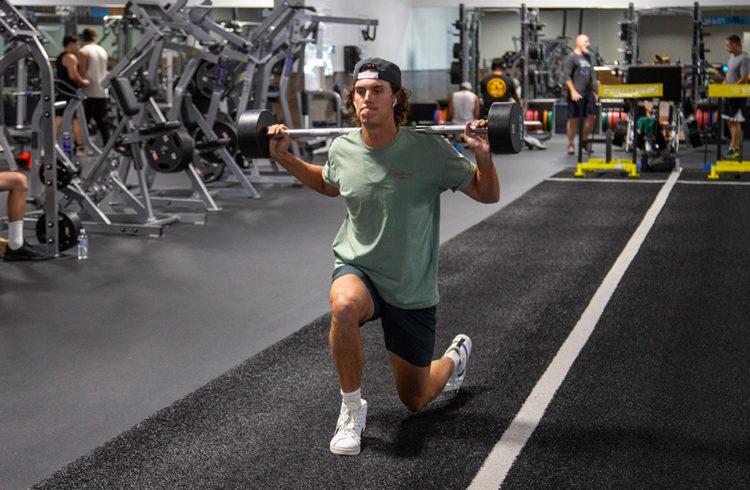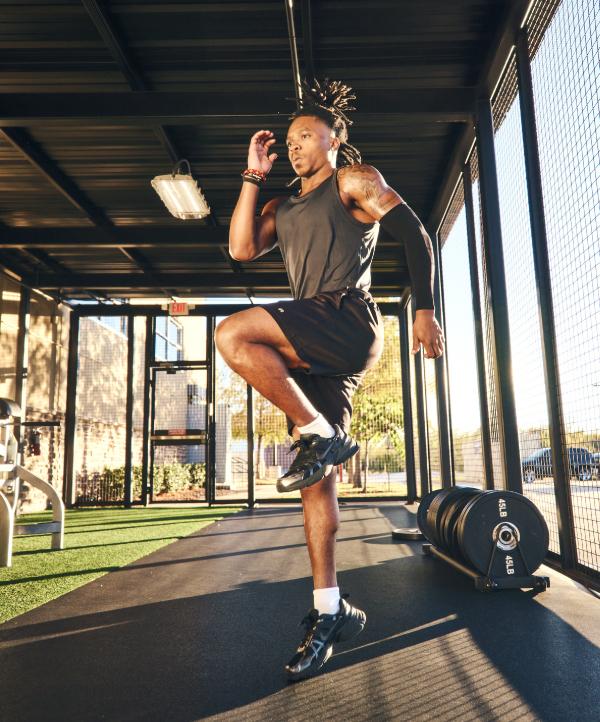What Cross-Training Can Do for You
Fitness Tips
Oct 20, 2022 • 5min read
If variety is the spice of life, how does that factor into your workout routine? Answer: cross-training. Varying your workouts is not only a great way to reach a higher level of fitness, but it can also eliminate gym boredom. Cross-training is the simple, more holistic total body approach to your routine. For example, adding cycling to your marathon training can help build and maintain endurance. Swimmers may practice rowing to work similar muscle groups to enhance strength and agility. But before you go out and buy all-new running shoes, paddles, and a bike, learn the benefits of cross-training to help you level up your health and fitness routine.
WHAT IS CROSS-TRAINING?
To those practicing strength training, conditioning for a marathon, or preparing for a club sport activity, you may have been told that adding variety can be a key factor to success. But cross-training is a term that’s been around for decades. At its core, cross-training is all about pairing workouts that will support each other. An ideal cross- training routine incorporates cardiovascular exercise, strength training, and flexibility exercises like yoga or Pilates. Mixing up your routine will help you increase strength, power, speed, endurance, agility, and balance, all of which help improve performance for all sports and your everyday life.
WHAT IS A TYPICAL CROSS-TRAINING ROUTINE?
As cross-training simply means practicing a few different types of exercise, movements, or modalities, there really is nothing typical about it! To pro athletes such as basketball players, cross-training can be as robust as taking a morning high-intensity cycle class to build power in sprints, strength training in the afternoon, and practicing evening yoga to help with flexibility and muscle recovery.
But to everyday gym-goers aiming to improve their health and fitness routines, cross-training can be as simple as adding a few outlying activities to the “main thing” you enjoy doing.
Although no two cross-training routines are the same, a balanced program might look like this:
- Aerobic exercise (walking, swimming, running, biking): 30 minutes; three times a week.
- Strength training (lifting weights or use of resistance tools): 30 minutes; twice a week working each major muscle group, but on alternate days.
- Flexibility exercise: Every day for at least 5 to 10 minutes.
The key to starting cross-training is to think about your exercise goals and what complements them. If you’re consistent in the additional activities you choose, leveling up when necessary, you’ll reach a more holistic, total-body level of fitness.
WHAT ARE THE BENEFITS OF CROSS-TRAINING?
Besides offering a higher level of all-around body conditioning, cross-training offers several advantages on the road to achieving your health and fitness goals.
Reduces risk of injury
Cross-training limits the stress that occurs on a specific muscle group because different activities use muscles in slightly different ways. Continually training the same muscle groups using one mode of exercise can lead to overuse injuries over time.
Keeps you mentally engaged
It’s easy to fall short of our health and fitness goals when we get bored by repeating the same workout week after week. With cross-training, you’re able to constantly adjust your plan with new activities, so you stay mentally engaged and on target.
Enhances weight loss
Individuals wanting to shed pounds can effectively achieve a reduction in body weight and fat stores by combining two or more physical activities in a cross-training regimen.
Helps keep you active while injured
While rest is essential when sustaining any type of muscle, ligament or bone injury, you don’t have to be completely sidelined if you’re able to shift to another activity. Cross-training can be active recovery and help you maintain physical fitness while you rest other muscle groups. Can’t run? Swim. Can’t play tennis? Practice yoga and core exercises to maintain your strength.
WHAT MUSCLE GROUPS SHOULD CROSS-TRAINING COVER?
To reap the full-body benefits a well-rounded routine can offer, these are the areas you should rotate and workout on a weekly basis.
Core: Incorporating sit-ups, planks, and other activities that strengthen the abdomen will give you a well-rounded cross-training program.
Arms: Your cross-training routine should work your biceps and triceps. Hand weights, strength equipment, resistance bands and even push-ups and chair dips will help work these muscles.
Legs: Perform exercises like lunges and squats to work your hamstrings and quadriceps. Aerobic activities like running and stair climbing also strengthen your legs.
Glutes: Lunges, squats and many other leg activities are also good for the glutes.
Back: You’ll want to incorporate exercises for your back – row machines do just that.
WHAT TYPES OF EXERCISES SHOULD CROSS-TRAINING INCLUDE?
Cross-training routines should rotate the following types of exercises throughout the week.
Flexibility: Warmup and cooldown stretches are a great way to prevent injury and a huge benefit of cross-training.
Aerobic: A low or high-impact cross-training routine should include cardio exercises, such as running, stair climbing, or water aerobics.
Strength training: Lifting weights and bodyweight exercises like push-ups are important to include in your cross-training regimen at least twice a week.
If you’re ready to enhance your strength training, speed, and agility and achieve better overall health and fitness, sign up for a Free 7-Day Gym Pass. You can also schedule a Personal Training consultation at EōS to create the perfect cross-training workout for your fitness goals.




